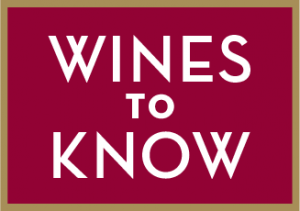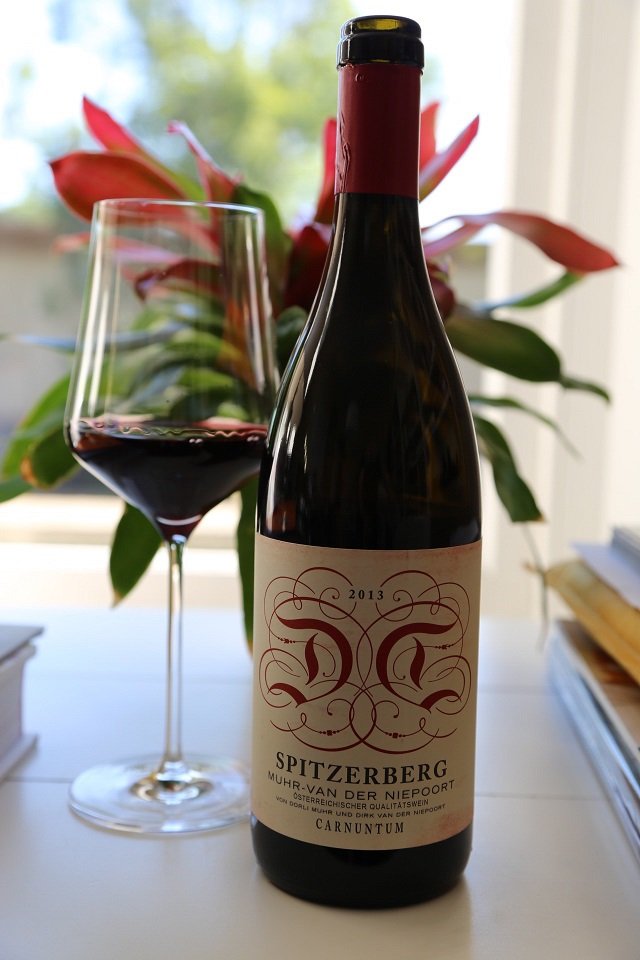
MUHR-VAN DER NIEPOORT | “Spitzerberg” Blaufränkisch 2013
(Carnuntum, Austria) $50
 Maybe there’s no actual evidence, but I feel pretty sure that blaufränkisch (BLOUGH-frank-ish) is pinot noir’s sexy older brother—the one who rode Harleys and hung out with Hemingway (or did whatever the equivalent was two thousand years ago). This blaufränkisch from the single vineyard Spitzerberg is certainly like that—a peppery, fruity red that’s racy and dark at the same time. Blaufränkisch, Austria’s leading red, has the wonderful ability to be simultaneously velvety and structured. If I could stop what I’m doing and cook up some duck breasts with cherry sauce, I would. (13% abv)
Maybe there’s no actual evidence, but I feel pretty sure that blaufränkisch (BLOUGH-frank-ish) is pinot noir’s sexy older brother—the one who rode Harleys and hung out with Hemingway (or did whatever the equivalent was two thousand years ago). This blaufränkisch from the single vineyard Spitzerberg is certainly like that—a peppery, fruity red that’s racy and dark at the same time. Blaufränkisch, Austria’s leading red, has the wonderful ability to be simultaneously velvety and structured. If I could stop what I’m doing and cook up some duck breasts with cherry sauce, I would. (13% abv)
92 points KM
Available at K&L Wine Merchants

Carbonic maceration is a process that is widely practiced in which French winemaking region?
A. Provence
B. Burgundy
C. Alsace
D. Beaujolais

Bubble Rap
Prosecco: Becoming a pet peeve of the wine world?
Lately I’ve been in countless restaurants that start pouring prosecco when I ask for a glass of Champagne. I like good prosecco. But offering prosecco in place of Champagne is like suggesting a tofu patty to someone who wants a hamburger. Prosecco and Champagne are not even remotely the same thing. Continue Reading…


Why Man’s Best Friend is Probably (OK, Definitely) Not a Canine
They drink alcohol and love spicy food. What attributes could be better in a best friend? And of course, it’s not your dog. The animal in question is a tree shrew, the only mammal (besides us) who likes habaneros, jalapenos, spicy Bloody Marys, you name it. If its furry forehead breaks out in a sweat, it’s just fine as far as a shrew is concerned. According to a report in Atlas Obscura, tree shrews are very closely related to humans but are smaller than primates so they are easier to study. In recent research, scientists discovered that tree shrews are similar to birds: Neither are affected by capsaicinoids, the molecules that make chilis hot. So break out the Carolina Reapers and the Ghost Peppers—we think these guys can handle them.

Commenting on one of the items in our July 6, 2018 edition of WineSpeed, George C., from Calistoga, CA, wrote in with this illuminating comment:
“Xera (plural of Xeros) is a Greek word. It means dry. Greeks use this word to describe a totally dry piece of wood, a dry wine, even a stubborn, hard headed person: Xerokefalos. My theory is that the Jerez coastal region being the most arid of all the ones the Greeks occupied and cultivated along the northern Mediterranean coast, including southern Italy, Sicily, Marseille, and Spain was so named because of it. So, I would venture to say, that at its basic etymology Jerez denotes ‘Dry.’”

The Italian DOCG (Denominazione di Origine Controllata Garantita) is a government standard applied to individual producers.
Answer: False. The DOCG, a designation first enacted in 1980 for wines of exceptional quality and renown, is applied to an entire wine-producing region, not individual wine producers. Both the greatest wine in that region and the worst get to say they are DOCG. This is unlike the DOC (Denominazione di Origine Controllata) which enacts strict standards for certain types of wines (like the Tuscan white vernaccia di San Gimignano, which was the first to be given DOC status in 1966). The first four DOCGs were brunello di Montalcino and vino nobile di Montepulciano, in Tuscany; and Barolo and Barbaresco, in Piedmont.

![]()
Certified California Sustainable
A Certified California Sustainable winery or vineyard must satisfy 95 eco-friendly criteria including, energy and water conservation, wildlife habitat protection, natural pest management, greenhouse gas emissions reduction, and avoid pesticides and herbicides. Currently, there are a total of 132 California wineries and over 1,160 vineyards who have earned this logo.







